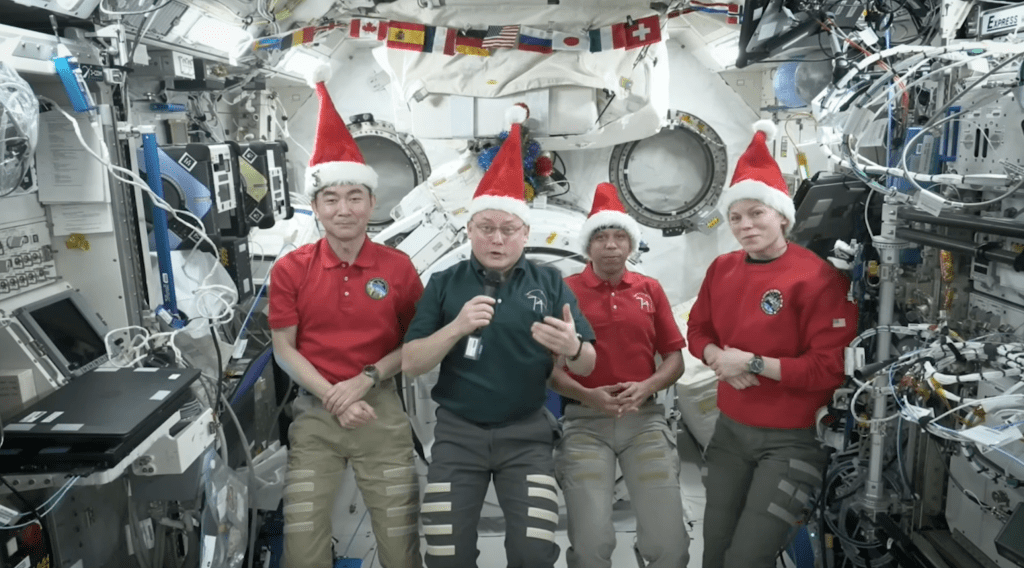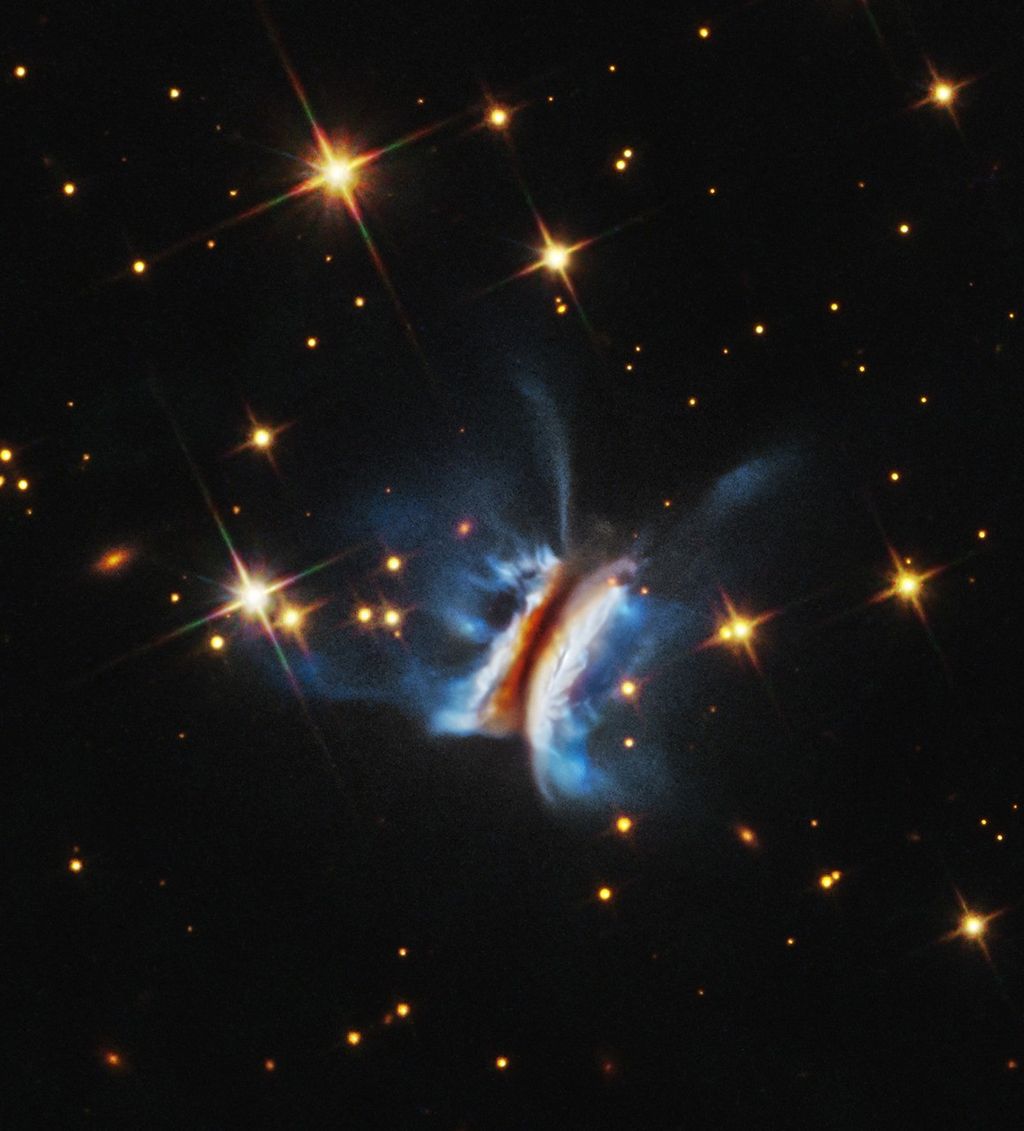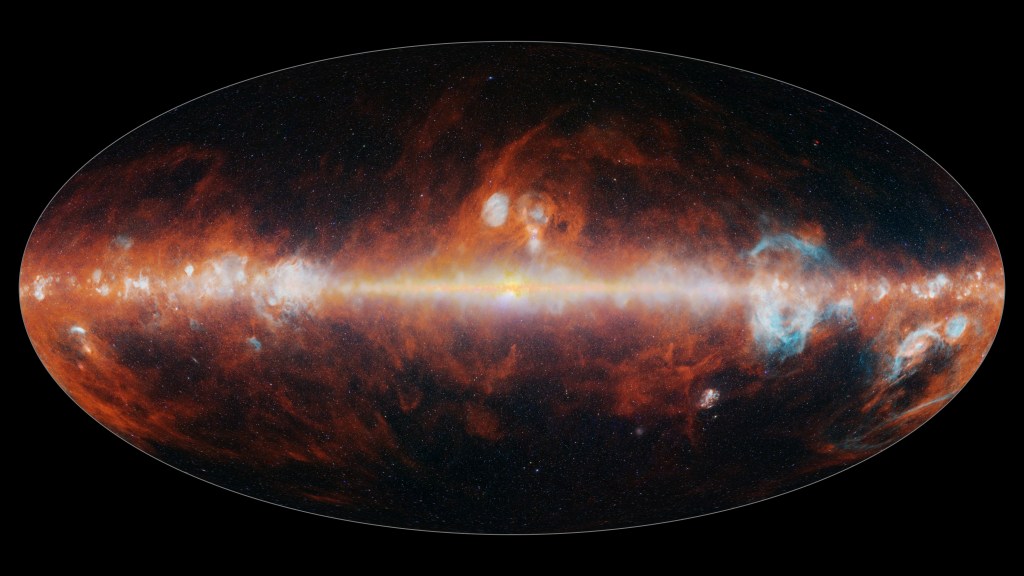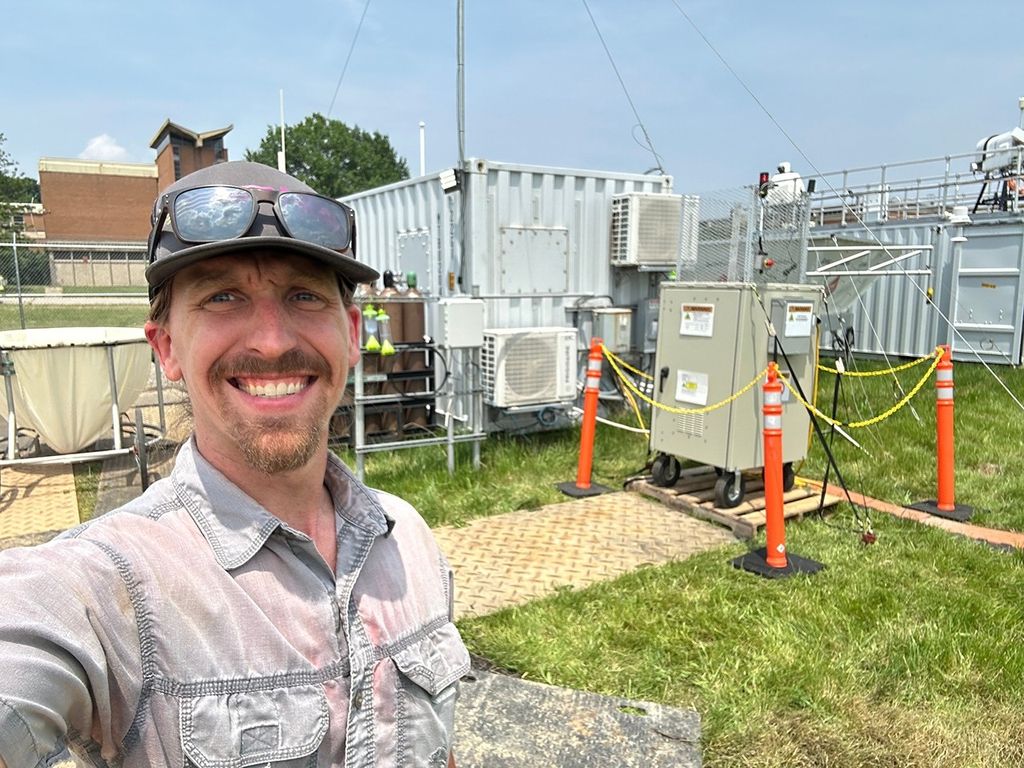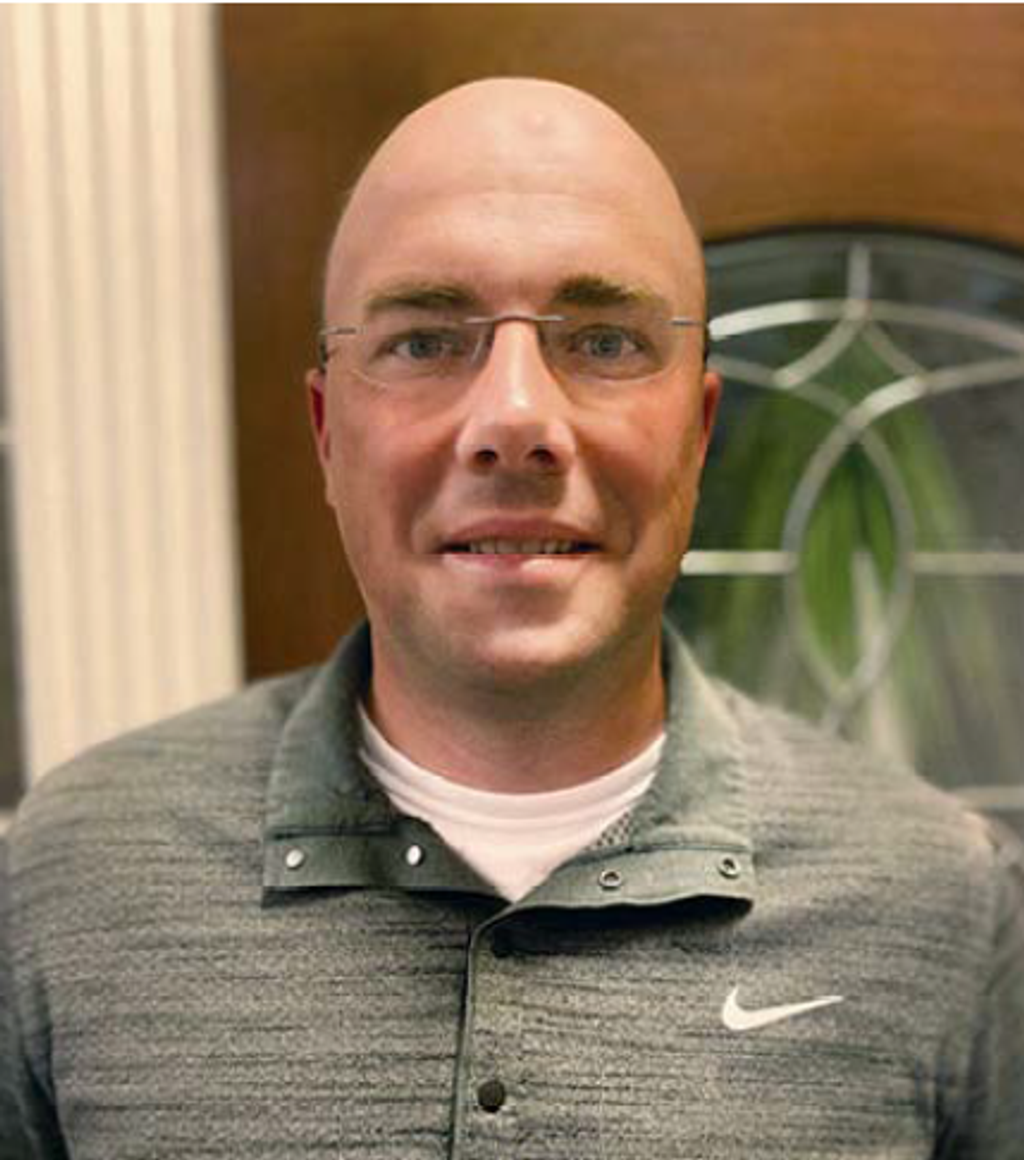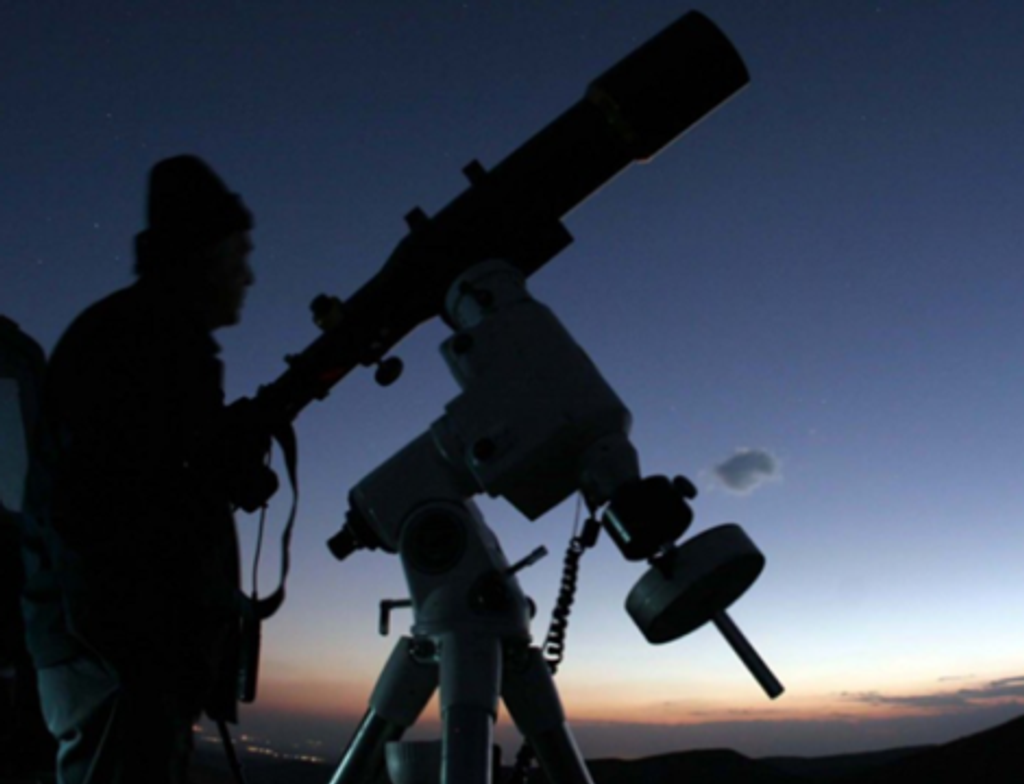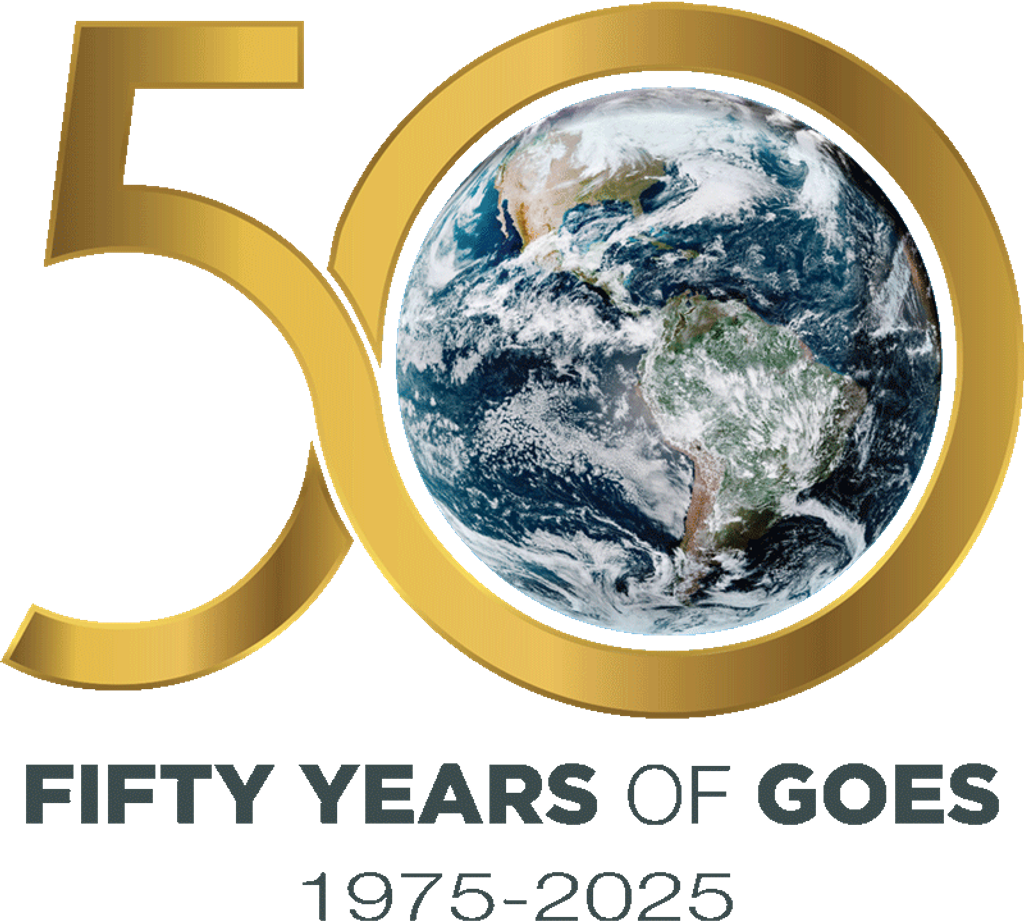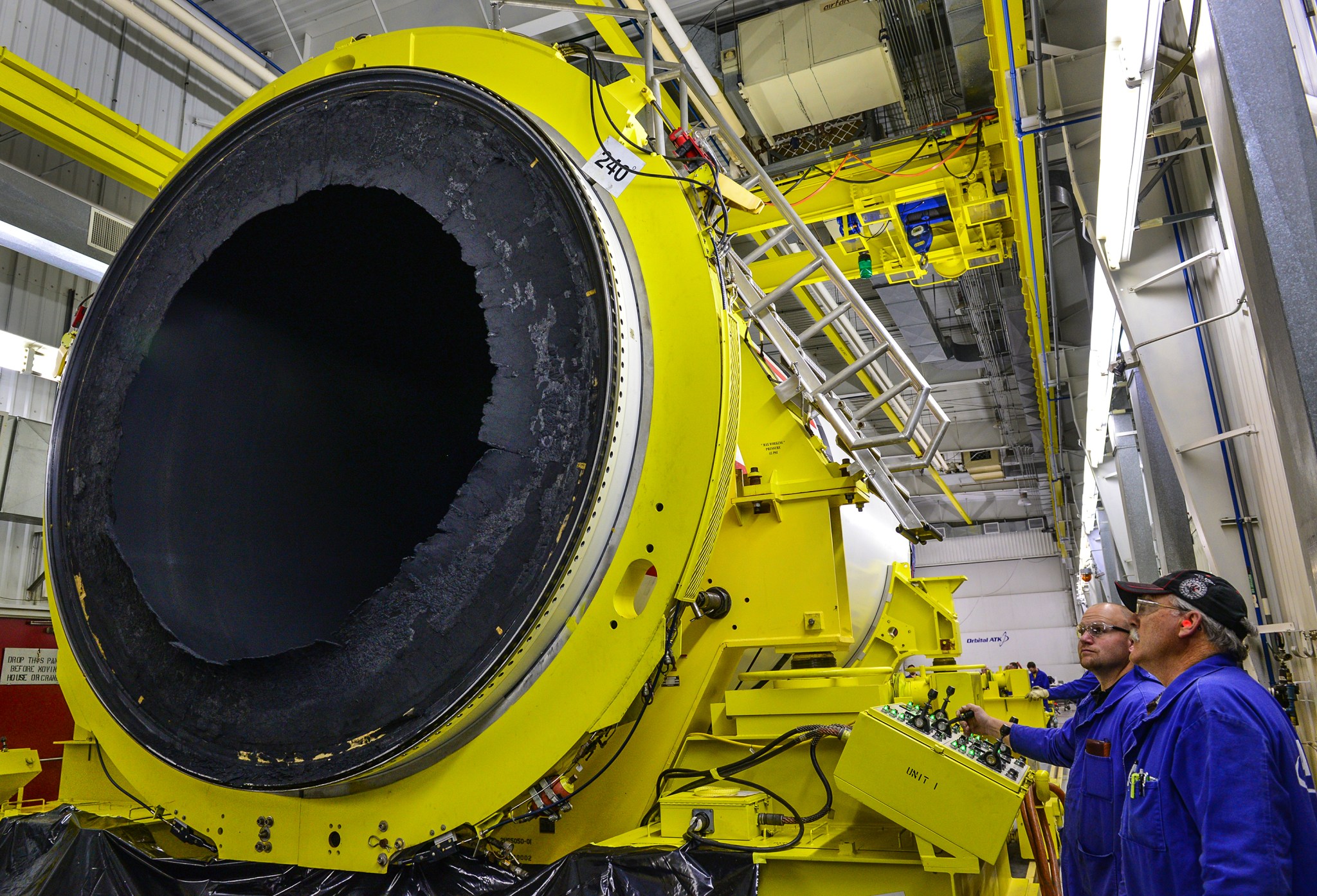In This Week’s Star
- › NASA’s Flair for Flare: Engineers Test Hydrogen Burn-off Igniters for Space Launch System
- › SLS Booster Work Continues Well after Smoke Clears from Major Test
- › NASA, Louisiana Celebrate Enduring Partnership and Next Steps on Journey to Mars
- › Steve Cash Leads Shared Experiences Discussion
- › 3D-Printed Habitat Centennial Challenge opens at Bay Area Maker Faire
- › Marshall to Host Asian-Pacific Islander Heritage Event May 26
- › NASA’s Dawn Spacecraft Takes New Images of Dwarf Planet Ceres, Featured On ‘This Week @NASA’
NASA’s Flair for Flare: Engineers Test Hydrogen Burn-off Igniters for Space Launch System
By Megan Davidson
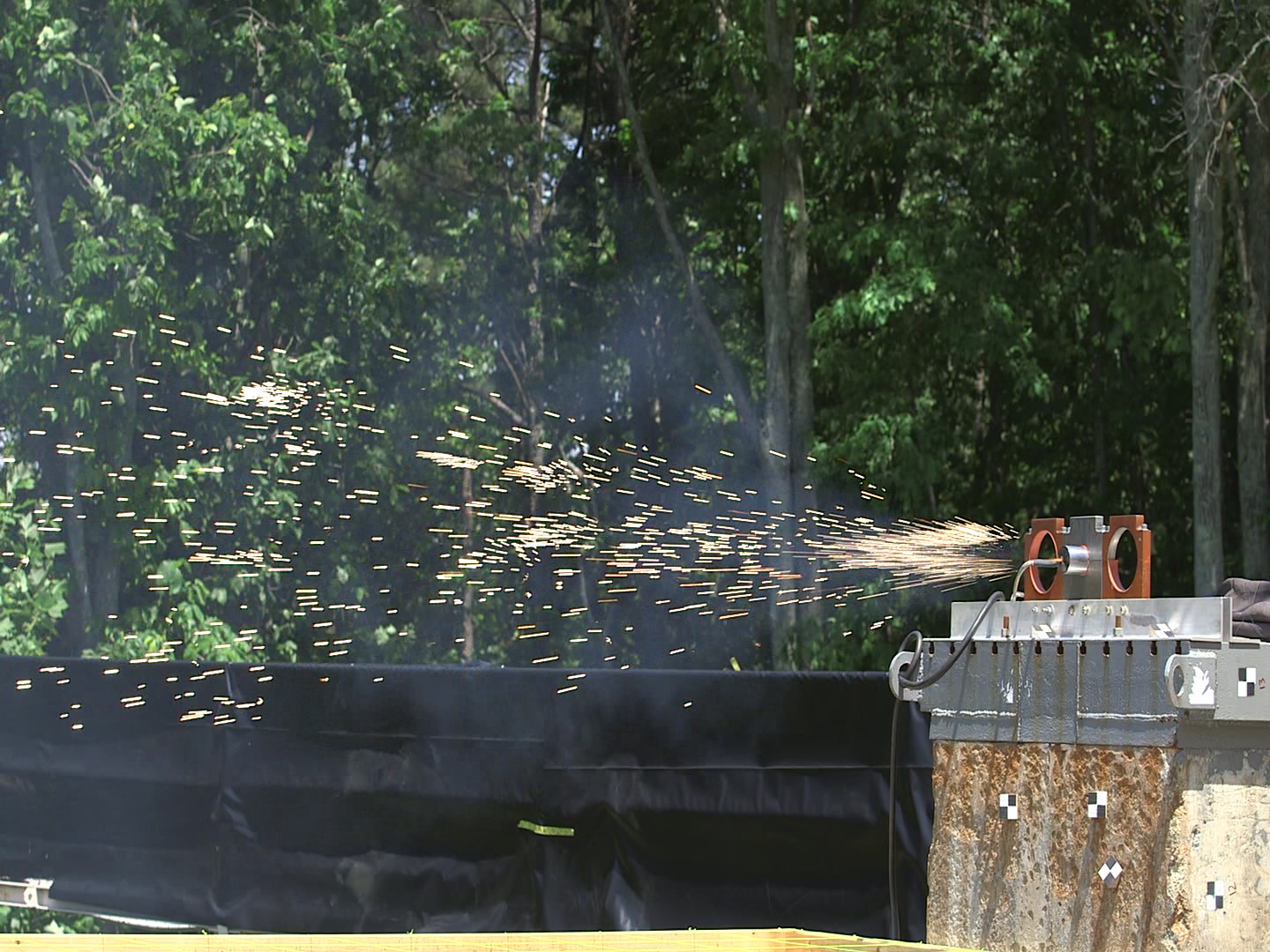
NASA has a certain “flare” when it comes to safety on the launch pad.
Those flares are called hydrogen burn-off igniters — which resemble celebratory sparklers — and were successfully used to mitigate risk to a launch vehicle for space shuttle missions.
A team of engineers is testing hydrogen burn-off igniters for NASA’s Space Launch System at NASA’s Marshall Space Flight Center, where the program is managed for the agency. SLS will be the most powerful launch vehicle ever built. It is designed to be sustainable and evolve to carry crew and cargo on deep space missions, including an asteroid placed in lunar orbit, and ultimately to Mars.
NASA uses highly combustible propellants: liquid hydrogen and liquid oxygen to power the RS-25 engines. These engines, along with solid rocket boosters, lift the rocket into orbit.
“When the engines start up on the launch pad, there is a small amount of free hydrogen that can potentially collect at the aft of the rocket,” said Don Nance, a Jacobs Technology Inc. employee in the Fluid Dynamics branch of the Engineering Directorate at Marshall. “About 10 seconds before liftoff, the igniters burn off that excess hydrogen rather than let it burn on its own, which could be a safety concern.”
If too much excess hydrogen is allowed to accumulate beneath the vehicle and ignites, then the resulting blast wave could potentially damage the vehicle and the surrounding structure. Igniters are used to prevent large-scale accumulation of excess hydrogen from forming during launch.
Engineers are testing the igniters to ensure that they function as intended, considering the SLS launch aspects of pad configuration, water suppression system and wind effects. The combination of these SLS launch aspects are different than the shuttle, necessitating the current test series.
Four RS-25 engines will be part of the rocket’s propulsion system, and the vehicle will have 12 hydrogen burn-off igniters per launch attempt. The igniters are not part of the propulsion system and don’t pose a risk to the engines themselves.
“Hydrogen burn-off igniters are more like small rocket motors than an explosive,” said David McDaniels, an aerospace engineer who also works in Marshall’s Fluid Dynamics branch. “They generate enough of a propellant plume to carry the sparks at least 15 feet to the right place to burn off any excess hydrogen.”
Nine tests are planned for the test series, which began May 5 at the Army’s Redstone Test Center on Redstone Arsenal. The test center was used due to its certification in handling pyrotechnics, test stand availability and operation expertise for this kind of work.
During testing, the igniters are fired, and high-speed cameras record several measurements, including the throw distance and area coverage of the particles. Fans create various cross-wind environments similar to the conditions the vehicle may experience at launch. Weather permitting, testing will wrap up in mid-May.
“I’ve wanted to work on the space program ever since I was a little kid,” McDaniels said. “It’s great to be a part of testing for the rocket that will one day enable humans to travel to Mars.”
For a video of the testing, click here.
Davidson, an ASRC Federal/Analytical Services employee, supports the Office of Strategic Analysis & Communications.
SLS Booster Work Continues Well after Smoke Clears from Major Test
Orbital ATK technicians detach the center forward segment from the forward segment of NASA’s five-segment booster that fired up for testing March 11 at Orbital ATK’s test facility in Promontory, Utah. The two-minute static test was the first of two ground tests to support qualification of the boosters that will help launch the first flight of NASA’s new rocket — the Space Launch System. The most powerful launch vehicle ever built, SLS will take humans and cargo on deep space missions, including an asteroid and ultimately to Mars. Disassembly and inspection of the booster is ongoing, but preliminary analysis of the test data shows all test objectives were successfully completed during the hot fire. The second qualification test is planned for early 2016. Once qualified, flight booster hardware will undergo final manufacturing and preparation for shipment to NASA’s Kennedy Space Center for the rocket’s first unmanned flight. (Orbital ATK)
NASA, Louisiana Celebrate Enduring Partnership and Next Steps on Journey to Mars

NASA, its Michoud Assembly Facility and the State of Louisiana honored their enduring partnership in support of the nation’s space goals during the 2015 NASA Louisiana Aerospace Day on May 14 at the Capitol in Baton Rouge.
Patrick Scheuermann, director of NASA’s Marshall Space Flight Center, which manages Michoud for the space agency; astronaut Rick Mastracchio and other NASA and Michoud representatives met with Louisiana Gov. Bobby Jindal and a host of state leaders and lawmakers. NASA’s economic, educational and cultural contributions to the state were recognized by proclamations in the House and Senate, while displays in the rotunda and on the lawn gave Capitol visitors a vivid look at work underway on the Space Launch System, Orion and other NASA projects.
Mastracchio also joined NASA officials and educators for visits to the Park Forest Middle School Boys and Girls Club and Scotlandville Magnet High School in Baton Rouge. NASA representatives also visited area universities and other schools, as well as other Boys and Girls Clubs to talk about space exploration and the importance of science, technology, engineering and mathematics, or STEM, education.
For more than 50 years, NASA and Louisiana have worked together to take giant leaps in space exploration, building the giant Saturn V rocket that made it possible for humans to set foot on the moon, and tanks for the space shuttles that traveled to and from orbit to build the International Space Station. Today, the unique workforce and capabilities at Michoud are building the core stage of the SLS — to be the most powerful rocket ever built, able to carry explorers on deep-space missions to Mars and back.
The National Center for Advanced Manufacturing, located at Michoud, developed some of the leading-edge tools, techniques and materials being used to build SLS and the Orion spacecraft that will carry explorers on deep-space missions. NCAM, formed in 1999, is a partnership among NASA, the State of Louisiana, Louisiana State University and the University of New Orleans. LSU leads NCAM on behalf of the partnership.
“Through NCAM, NASA is expanding its efforts to engage industry and academia on advanced manufacturing topics central to the nation’s space mission, with a particular focus on manufacturing technologies that reduce the weight of materials during space flight,” Scheuermann said. “Advanced manufacturing techniques are essential to creating the rockets and technology that will allow humans to explore deeper into space and make a journey to Mars.”
NCAM and the Louisiana Center for Manufacturing Sciences had another reason to celebrate on Aerospace Day: The partnership has been awarded a National Institute of Standards and Technology Advanced Manufacturing Technology Planning Grant of $500,000 over two years. The grant will be used to create the Center for Accelerated Development of Large-Scale Structures, a consortium from the aerospace, ship-building and ground-transportation sectors to address common challenges in design and manufacturing.
Steve Cash Leads Shared Experiences Discussion
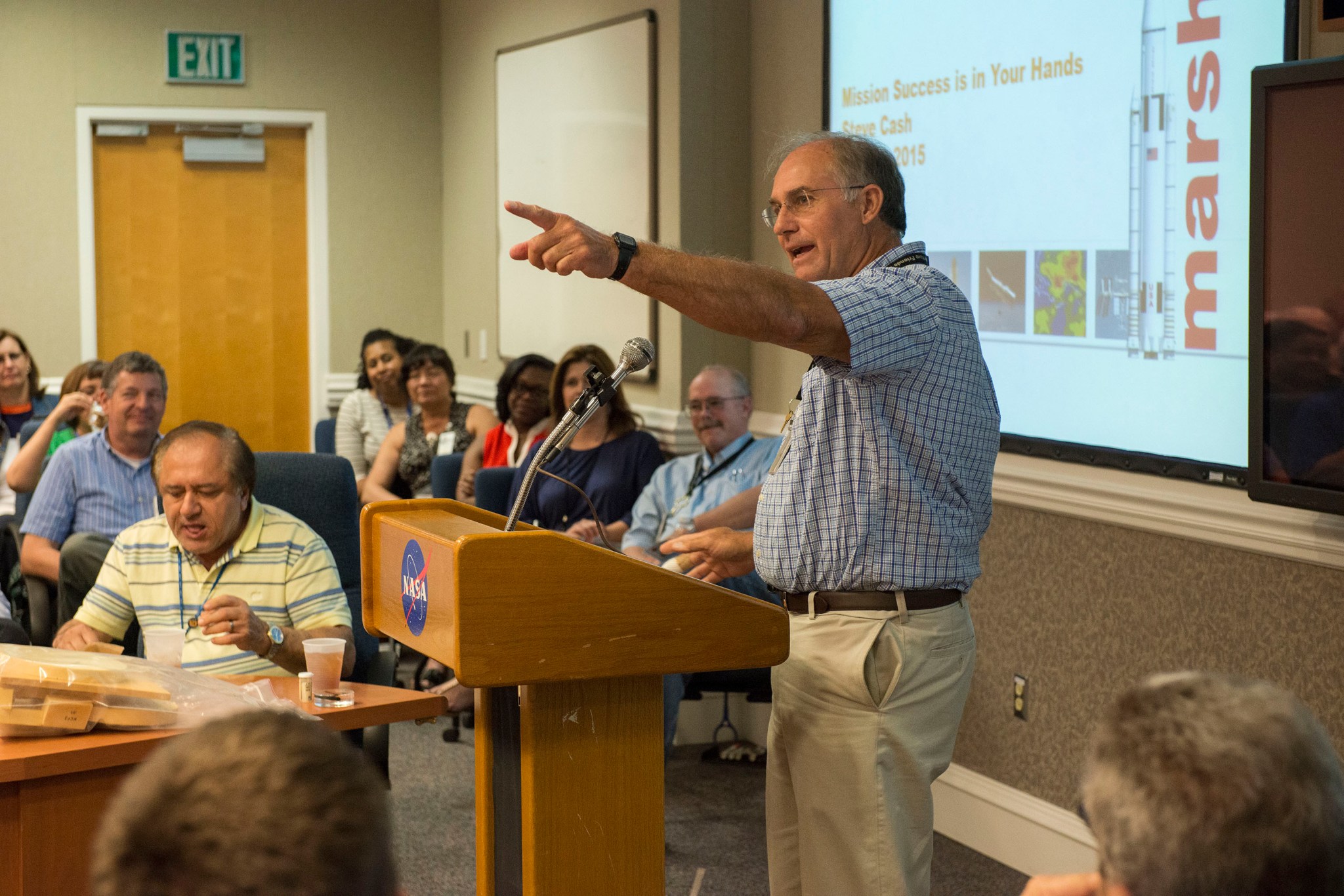
Steve Cash, director of NASA’s Marshall Space Flight Center’s Safety & Mission Assurance Directorate, addresses a full house during a Shared Experiences forum held May 14 in Building 4203. The discussion focused on Return To Flight following the Columbia accident and how Cash realized that “we are not as smart as we think we are.” Shared Experiences is an ongoing discussion series and part of the Mission Success Is In Our Hands initiative, led by S&MA. (MSFC/Fred Deaton)
3D-Printed Habitat Centennial Challenge opens at Bay Area Maker Faire
By Janet Sudnik
NASA’s Centennial Challenges program and the National Additive Manufacturing Innovation Institute, known as America Makes, announced and opened a new $2.25 million competition to design and build a 3-D printed habitat for deep space exploration May16 at the Bay Area Maker Faire in San Mateo, California.
The multi-phase 3-D Printed Habitat Challenge is designed to advance the additive construction technology needed to create sustainable housing solutions for Earth and beyond.
“I need you to think differently,” said Sam Ortega, program manager for Centennial Challenges, which is managed at Marshall, to the Maker Faire audience during his presentation. The challenge was also represented at the NASA agency booth, which housed several other programs and projects. The event attracted an estimated 180,000 attendees.
The first phase of the competition runs through Sept. 27. This phase, a design competition, calls on participants to develop state-of-the-art architectural concepts that take advantage of the unique capabilities 3-D printing offers. The top 30 submissions will be judged and a prize purse of $50,000 will be awarded at the 2015 World Maker Faire in New York in September.
Winning concepts and products will help NASA build the technical expertise to send habitat-manufacturing machines to distant destinations, such as Mars, to build shelters for the human explorers who follow. On Earth, these capabilities may be used one day to construct affordable housing in remote locations with limited access to conventional building materials.
America Makes is a public/private partnership of organizations focused on accelerating the capabilities and adoption of additive manufacturing technology.
The Centennial Challenges Program is part of the agency’s Space Technology Mission Directorate in Washington.
Sudnik, an ASRC Federal/Analytical Services employee, supports the Office of Strategic Analysis & Communications.
Marshall to Host Asian-Pacific Islander Heritage Event May 26
NASA’s Marshall Space Flight Center will host an Asian-Pacific Islander Heritage event May 26. The keynote speaker will be M. Farook Sait, former director of civil rights at the U.S. Department of Agriculture, Food Safety and Inspection Service, and former special counsel to the assistant secretary for civil rights at the USDA.
Sait will speak to Marshall team members about his experience living in the Southern United States as an immigrant in the 1960s. The event is scheduled for 10-11 a.m. in Building 4200, room P110.
A native of Bangalore, India, Sait came to Huntsville in 1963 and attended Oakwood College, now Oakwood University, as the school’s first non-African-American student. Sait went on to graduate from Columbia Union College in Takoma Park, Maryland, and Howard University School of Law in Washington. He is a member of the Bar of the Supreme Court of the United States and the State Bar of Maryland. He has served two terms as president of the Federal Asian Pacific American Council, and two terms as president of the Organization of Professional Employees of the Department of Agriculture.
For more information about this event, please contact Abbie Johnson at 256-544-0014 or abbie.j.johnson@nasa.gov.
NASA’s Dawn Spacecraft Takes New Images of Dwarf Planet Ceres, Featured On ‘This Week @NASA’
New images of the mysterious bright spots on the dwarf planet Ceres, recently taken by NASA’s Dawn spacecraft, were featured in the latest edition of “This Week @NASA,” a weekly video program broadcast nationwide on NASA-TV and posted online.
The images captured May 3 and 4 are the closest yet and are helping scientists better resolve what the bright spots are on the surface of Ceres, the largest object in the asteroid belt between Mars and Jupiter.
The sequence of images, taken from a distance of 8,400 miles, reveals that the brightest spots within a crater in the northern hemisphere are composed of many smaller spots. The exact nature of the spots remains unknown, but scientists estimate the spots are caused by the reflection of sunlight by highly reflective material on the surface, which could possibly be ice. Dawn enters its second mapping orbit on June 9, placing it in an altitude of 2,700 miles above the surface, orbiting Ceres once every three days.
The Dawn spacecraft first entered Ceres orbit March 6, making it not only the first spacecraft to visit a dwarf planet, but the first mission to also orbit two extraterrestrial targets, as it visited the asteroid Vesta previously. The Dawn spacecraft is managed by the Jet Propulsion Laboratory and is one of several projects under the Discovery Program managed by Marshall for NASA’s Science Mission Directorate.
View this and previous episodes at “This Week @NASA” or at https://www.youtube.com/user/NASAtelevision.

